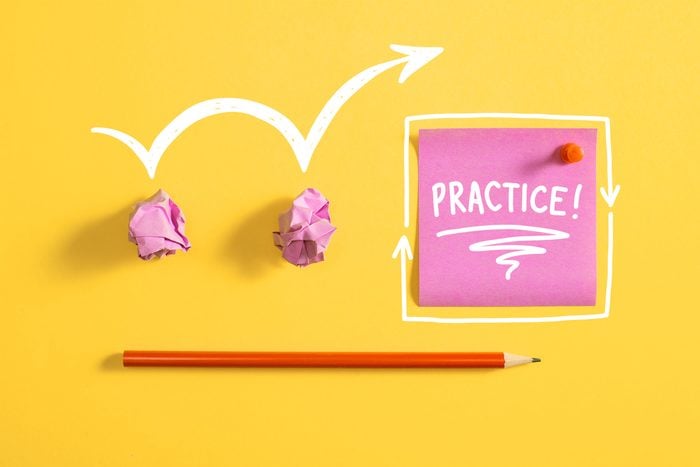
Fear of public speaking
I once read a statistic that for most people, the fear of public speaking is greater than the fear of death. I should note that cause of death wasn’t included in this particular statistic. If we’re comparing giving a toast at your best friend’s wedding with shark cage diving off the Eastern Cape of South Africa, sans cage, my opinion is that the general public would choose to clink their glasses and toast the happy couple even if it made their legs shake.
All joking aside, the data tell us that when it comes to public speaking anxiety, there is a problem to be fixed. As a book author, professor and researcher who has spent the last 15 years studying the human voice, as well as a vocal coach who works with singers, actors and public speakers, I would have to agree. But the good news is that there are public speaking tips that can help make the prospect and the process less daunting.
Why is public speaking so scary?
It has been estimated that 10% of the population loves public speaking, 10% would actually choose death by shark attack and the other 80% land somewhere in the middle. If you’re one of the vast majority, the anxiety you experience is most likely rooted in two things: activation of your sympathetic nervous system and being underprepared.
The sympathetic nervous system is the body’s “fight or flight” response. It enlarges your pupils to let more light in, slows digestion so energy can be used in other, more survival-based parts of the body and increases your heart rate.
Your lungs are covered in nerves that connect to the autonomic nervous system, and the connections to the sympathetic nervous system are spread out at the top. Taking short, rapid breaths is a distress call; you’re basically sending up a smoke signal to your brain, saying, “Ready the troops, winter is coming and it’s bringing a dragon.” The longer the shallow, rapid breathing goes on, the stronger the call gets. This is super helpful if you are truly in imminent danger, but not so helpful when you’re giving a speech or presentation.
These changes in your body may truly be caused by anxiety about speaking, most often seen in people who also suffer from social anxiety, or they may simply be caused by preparedness, more specifically, your lack thereof. Great speakers make it look easy. Trust me, it is anything but. If you’re not sure how to prepare and even that gives you anxiety, fear not. Follow these public speaking tips that I teach my students.

Practice, practice, practice
One of the keys to being a great speaker is being able to pause, answer a question or rearrange your points on the fly to best serve the moment and the audience. To follow this public speaking tip, you must know your material cold. No exceptions. Reading word for word from a note card or PowerPoint isn’t going to cut it. Snooze fest! And what if you lose your place?
If you’re worried about memorizing your speech and then sounding robotic when reciting it, you don’t know your material well enough. You should be able to talk about your topic the same way you’d talk about your favorite movie/book/band. In detail and with ease. To do that, you have to know your material front, back, sideways and upside down.

Breathe deeply
Remember how I said the nerves that connect to the sympathetic nervous system are at the top of the lungs? Well, the nerves that connect to the parasympathetic nervous system (the rest-and-digest system) are at the bottom. Deep breathing activates the parasympathetic nervous system; it helps you calm down. The slower and deeper you breathe, the more powerful the parasympathetic nervous system’s response is and the calmer you become.
It only takes a split second for the sympathetic nervous system to activate, but it takes an hour or more for the parasympathetic nervous system to return the body to neutral. This is why it is important to get the parasympathetic nervous system going before you need it. Breathing slowly and deeply, so your diaphragm fully contracts, your belly goes out and your lungs fully fill with air, before and during your speech, signals to your brain that all is well. There is no need for panic. You are a pool of tranquility.

Record yourself
The way you sound in your head is always going to be different than how you sound to your audience. You know this if you’ve ever listened to a recording of yourself speaking and thought, “I don’t sound like that.” Yes, you do. To hear what your audience hears, you must record yourself and listen back. Try to recreate your upcoming speaking event—if you’ll be standing, stand; if you’ll be sitting in an interview or while talking to clients, sit.
Listen back to the recording and take note of how you sound. Are your words quiet and meek? Loud and aggressive? Too fast to understand? Slow and mumbled? Once you have a clear idea of how you sound, you can make changes accordingly.

Video record yourself
Now you know what your audience hears, but to see what your audience sees, you must turn the video on. Since birth, our bodies create a catalog of all the movements we use (the Somatic Rolodex) and place the movements we use most at the front, for easy access.
Some of these body movements serve us really well: a great golf swing, lifting with your legs instead of your back, etc., and some of them do not. Your body doesn’t differentiate between the two, it just prioritizes repetition. Most of my clients not only have physical ticks or movements that show up when they’re speaking—lifting one shoulder higher than the other, only gesticulating with their right hand, etc.—but they’re not aware of those movements. To see what your audience sees, and to be more comfortable with how you look in front of an audience, try this public speaking tip and turn the video on.

Warm up your voice
Your voice is largely made of skeletal muscle, the same kind of muscle you work in the gym, so to do its best work it needs to be warmed up. My favorite vocal warm-ups are Semi Occluded Vocal Tract Exercises (SOVTEs). If you think of speaking like sitting on a swing and pumping your legs to get going, SOVTEs are like someone giving you a push. They’re great for getting your voice going in the morning, if you’re feeling under the weather and before a speaking event.
To do it: Grab a straw, place it in your mouth and wrap your lips around it. Then hum. Be sure all the air is going through the straw. You can hum sirens (from the bottom of your range to the top), hills (small sirens that get larger each time) or use the melody of a song. Aim for two to three minutes, five times per day.

Hydrate
In addition to muscle, the vocal folds (cords) are made up of a jello-like substance called the lamina propria. It’s the jiggle of this jello that makes your voice sound clear and energized. The voice doesn’t have its own hydration/lubrication system; it is entirely dependent on your body being hydrated. Dehydrated jello? Not so jiggly. A dehydrated voice may sound gravelly, breathy and dull, may tire out more quickly and may even feel painful when speaking. It takes four hours for the water you drink to hydrate your vocal folds, so be sure you are drinking early and often.

Get steamy
Steam is a wonderful way to help your voice feel and sound its best. The vocal folds lie in the larynx, below the epiglottis, so anything you swallow doesn’t touch them. If it did, you’d be choking. All those lozenges, teas and sprays that are supposed to magically improve your voice? They don’t actually come into contact with your vocal folds. Steam is inhaled, so it does. Just like 20 minutes in a steam room leaves your body feeling relaxed and soothed, your voice will feel that way too.
You can invest in a personal steamer, take a long, hot shower with the bathroom door closed or go totally old-school and boil a pot of water on the stove, put a towel over your head, stand over the pot and breathe.

Talk yourself into it
Your thoughts have power. In fact, your thoughts are so powerful that your brain doesn’t know the difference between thinking and doing. Just thinking about an action causes the same motor neurons to fire as actually doing the action. This thinking-doing relationship also applies to your sympathetic nervous system’s fight-or-flight response. The more negative self-talk you engage in, the stronger the response becomes, until you find yourself freaking out about the presentation you have to give at work … next month.
Instead, switch your thoughts on public speaking by taking your No. 1 fear and turning it around. For example, “I hate public speaking, I always forget what I want to say and look incompetent” becomes “I love public speaking. I always say exactly what I mean and am totally professional.” Write your positive, new sentence down and put it in places you will see it: your bedside table, the bathroom mirror, your computer monitor. And when you see it, speak it out loud. Through repetition, you can actually retrain your brain to be less afraid of speaking.
Jessica Doyle-Mekkes is the author of I’m Speaking: Every Woman’s Guide to Finding Your Voice and Using It Fearlessly and the head of Musical Theatre at East Carolina University.